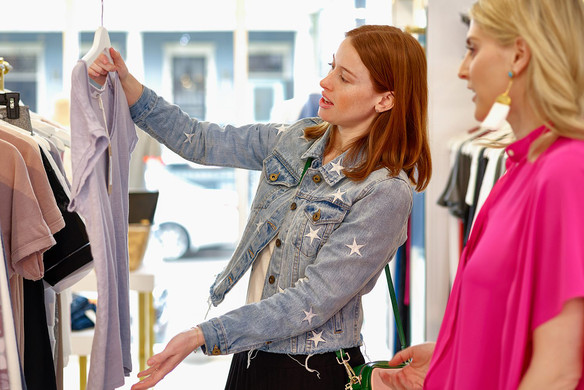Table of contents
Looking for a quick way to boost your retail sales? Try motivating your current customers to buy more.
Increasing your average ticket size can boost sales and revenue quickly (and often at a lower cost than acquiring new customers). And it’s a crucial step to grow your business, especially in the first few years when you don’t have a large customer base.
How to calculate your average ticket size
Before you can increase your average ticket size, you need to know where you’re starting from.
To calculate average ticket size, you need your daily ticket amounts and how many tickets you have per day. Divide the total spent per day by the amount of tickets, and you get your average ticket size.
| Day | Ticket Amounts | Number of Tickets | Total | Average Ticket Size |
|---|---|---|---|---|
| Monday | 20, 15, 18, 55, 90, 45 | 6 | $243 | $40.5 |
| Tuesday | 17, 20, 25, 100, 85, 34, 16 | 7 | $297 | $42.4 |
| Wednesday | 14, 30, 20, 19, 23, 49, 18 | 7 | $173 | $24.7 |
| Totals | 20 | $713 | $35.65 |
You can calculate average ticket sales by week or weekend, or during different times of the year to understand spending patterns. You might even look at average ticket size by employee to see who are your top performers.
Knowing your average ticket sale can help you determine a reasonable target for an increased ticket size. It can also show your sales staff how they’re performing toward a goal, and encourage them to improve their own tickets.
It’s one thing to know that you want to increase ticket size, but how do you do it? Here are some actionable steps to help sales and ticket size grow:
Make changes to your product mix
Try offering a broader range of products. Start by mixing in some upscale items or add-ons to increase overall ticket size. If you own a coffee shop, try adding extra flavored syrups or snacks at checkout.
Then take a look at your inventory and determine if you can cut lower-priced items. For example, if you’re a sneaker store and have shoes priced at $20, $30, and $50, you could consider discontinuing the $20 option. This increases sale price by redirecting customers toward slightly more expensive items. (Of course, before you do this, you want to look at your data and make sure the $20 version isn’t your money maker.)
Offer promotions
Everyone likes a deal and getting even as little as five percent off can encourage some shoppers to spend a little more.
Promotions can range from a full percentage off when a customer hits a certain spend amount to a buy one, get one free offering. You might even consider a small gift with purchase or access to a special event with a particular spend amount.
Just make sure your customers know about promotions by emailing and posting about them on social media. To send that promotional email quickly and efficiently, use an email marketing program that can help you keep track of customer information and preferences, and allows you to email en masse.
You can also use a customer loyalty program to reward customers when they purchase a certain number of items or spend a certain amount. These programs not only encourage customers to spend more but also to spend more, more often.
Bundle your offerings
You could also try bundling your offerings. Consider pairing a popular item in your store with one that has had slower sales. By offering your customers a deal on two or more products together, they get a small discount and your ticket size goes up.
This strategy is a win-win, since it helps you move product and increase sales, and your customers save some money on their purchase.
Offer financing
If you sell big-ticket items, consider offering in-store financing options to help your customers purchase more expensive items.
Customer financing can target customers who are browsing or are on the fence about buying something. Offering an extended period to pay off their purchase can help convert them into buyers or encourage them to purchase a more expensive item.
For example, if you own a furniture store, a customer may be eyeing that new couch or bedroom set. Offering the customer a furniture financing option can help close the deal by allowing them to pay it off over time.
Running a business is no easy feat, but Square is here to help. We have all the tools you need to start, run, and grow your business, whether you’re selling in person, online, or both. And we’ve made all our tools to work together as one system, saving you time and money — and making decisions easier. So you can get back to doing the work you love and focusing on whatever’s next. See how Square works.
![]()












